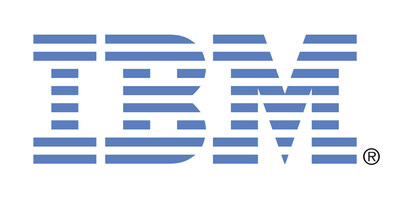Unveiling Adobe’s AI-Powered Creative Cloud: A Game Changer for Creators
In the realm of digital creativity, Adobe Creative Cloud applications have long been the gold standard. Now, with the integration of NVIDIA RTX GPUs, these tools are more powerful than ever, empowering creators to work faster and more efficiently. This article delves into the exciting advancements in Adobe’s suite of creative tools, driven by generative AI and NVIDIA’s cutting-edge technology.
Generative AI: A New Era for Creativity
Generative AI is a groundbreaking technology that creates new data, such as images or text, by learning from existing datasets. This technology can visualize and generate content based on user descriptions, opening up new avenues for creativity. Adobe’s Firefly is a family of generative AI models designed to enhance creative workflows. Trained on licensed content from Adobe Stock Images and public domain content, Firefly is safe for commercial use and integrates seamlessly into Adobe’s most popular apps.
Adobe Photoshop: Revolutionizing Image Editing
Adobe Photoshop, a staple in the creative industry, now features the Generative Fill tool. This tool allows users to add content to images using simple text prompts. Additionally, the new Reference Image feature, currently in beta, lets users upload a sample image to achieve results closer to their desired output.
The Generative Expand tool is another exciting addition. It enables artists to extend the borders of their images using the Crop tool, seamlessly blending new content with the existing image. This feature is particularly useful for creating larger canvases without losing the original image’s integrity.
Neural Filters: Enhancing Photos with AI
Photoshop’s RTX-accelerated Neural Filters, such as Photo Restoration, offer complex adjustments like colorizing black-and-white photos and performing style transfers using AI. The Smart Portrait filter, based on research from NVIDIA, allows for non-destructive editing with a range of filters, enhancing the creative process.
Adobe Illustrator: Accelerating Design Workflows
Adobe Illustrator, another cornerstone of the Creative Cloud suite, benefits from the new Generative Shape Fill (beta) feature. Powered by the Adobe Firefly Vector Model, this tool enables users to quickly fill shapes with detail and color in their own styles. This feature accelerates design workflows by allowing designers to match the style and color of their artwork effortlessly.
The Generative Recolor feature in Illustrator lets creators explore custom color palettes and themes for their vector artwork using text prompts. This tool significantly speeds up the process of finding the perfect color scheme for any project.
Adobe Premiere Pro: Enhancing Video Editing
Adobe Premiere Pro is renowned for its powerful video editing capabilities. The Enhance Speech tool, accelerated by RTX, uses AI to remove unwanted noise and improve the quality of dialogue clips, making them sound professionally recorded. This tool operates up to 4.5 times faster on RTX PCs, streamlining the editing process.
The Auto Reframe feature, also in Premiere Pro, uses GPU acceleration to identify and track the most relevant elements in a video. It intelligently reframes content for different aspect ratios, making it easier to create videos optimized for various platforms. Scene Edit Detection automatically identifies original edit points in a video, simplifying the editing workflow.
Adobe After Effects: Simplifying Visual Effects
Adobe After Effects, a key tool for visual effects and compositing, has introduced a feature that uses a matte to isolate objects. This capability is crucial for background replacement and applying effects selectively to foreground elements. The Roto Brush tool allows artists to draw strokes on representative areas, creating a segmentation boundary between foreground and background elements. This results in cleaner cutouts with fewer clicks, enhancing the efficiency of visual effects workflows.
Substance 3D Collection: Creating Photorealistic 3D Content
The Substance 3D Collection is Adobe’s solution for 3D material authoring, texturing, and rendering. It enables users to create stunningly photorealistic 3D content rapidly. The Substance 3D Stager’s Generative Background feature, powered by Adobe Firefly, allows artists to explore generated backgrounds quickly for compositing 3D models. Stager can automatically match the perspective and lighting to the selected background, streamlining the 3D rendering process.
Substance 3D Sampler: Transforming Images into 3D Materials
Adobe Substance 3D Sampler transforms images of surfaces and objects into photorealistic physically based rendering (PBR) materials, 3D models, and high-dynamic-range environment lights. The new generative workflows powered by Adobe Firefly make it easier for artists to explore variations when creating materials for projects ranging from product visualization to AAA games.
The Text-to-Texture feature in Sampler allows users to generate tiled images from detailed text prompts. These images can be edited and transformed into PBR materials using the Image-to-Material feature or any Sampler filter. Similarly, Image-to-Texture enables the creation of tiled textures from reference images, providing an alternate way to generate variations from existing visual content.
Adobe Lightroom: Enhancing Photos with AI
Adobe Lightroom’s AI-powered Raw Details feature enhances images by producing crisp detail, accurate edge renditions, improved color rendering, and reduced artifacts. This is particularly useful for large displays and prints where fine details are crucial. The Super Resolution feature doubles the linear resolution of images, making it ideal for increasing the resolution of cropped images.
For faster editing, AI-powered, RTX-accelerated masking tools like Select Subject and Select Sky enable users to create complex masks with a single click. These tools isolate people and skies in images, simplifying the editing process and allowing for more creative freedom.
Conclusion: The Future of Creative Workflows
Adobe’s integration of NVIDIA RTX GPUs and generative AI models is revolutionizing the creative industry. These advancements enable creators to work faster, more efficiently, and with greater precision. From image editing and design to video editing and 3D rendering, Adobe’s AI-powered tools are setting new standards in digital creativity.
For those interested in exploring these features, Adobe’s AI features page provides a comprehensive list of AI-powered tools using RTX. Additionally, NVIDIA Broadcast offers a range of AI-powered content creation apps, transforming any room into a home studio.
Generative AI is reshaping gaming, videoconferencing, and interactive experiences. Stay updated on the latest developments by subscribing to the AI Decoded newsletter.
In summary, the collaboration between Adobe and NVIDIA is not just enhancing creative tools but also paving the way for future innovations in the creative industry. These advancements promise to make creative workflows more intuitive, efficient, and powerful, ultimately empowering creators to push the boundaries of their craft.
For more Information, Refer to this article.


































